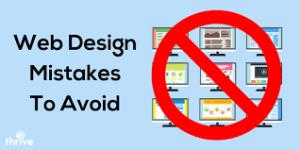Content marketing has never been more important. As the saying goes, “Content is king.” More than ever, businesses and brands need to have content that truly resonates with their target audience. And this means giving them a voice in a way that creates real value for their audience.

Here are a 6 quick and easy ways to create great content this year.
Why do you need to create great content?
Because it helps you stand out from the crowd and get your message across effectively. It also allows you to attract more readers who will share it with their friends and followers. This can lead to more traffic and sales for your business, which can be used as an asset when marketing your business.
Also, if you don’t have quality content, people won’t visit your site and leave it as soon as possible. You need to write about things that are valuable for your audience and keep them coming back for more information.

People visit sites regularly and trust each other’s opinions more than any other source of information out there. If they see an article on your site that they liked, they will definitely come back and read more of your articles so that they can get the best out of what you have to say, especially if they liked the article enough to share it with others!
This is how social media works, too – if you want people to share something with their friends or followers, they will do so because there was something in it that caught their attention.”
How do you decide what topics to cover to create great content?
The best way to think about the process of creating great content is as a conversation with your audience and growing your brand with Storytelling. The goal is not just to provide information, but rather to educate and inspire your audience.
This can be done in many ways, including:
- Providing customer testimonials, case studies and success stories that showcase how your product or service has helped others.
- Including interviews with experts in your field who can discuss their views on the topic at hand.
- Providing unique content that connects with your audience by focusing on a common theme or trend.
Generally, you need to create content that resonates with your audience. You can do this by answering the questions your readers have, but you also need to know what those questions are so that you can write about it.
Here are a few questions to ask yourself when creating content:
- What do I want my audience to know?
- How will they benefit from knowing this?
- Will this topic make me money?
- Who is my target audience?
6 ways to create great content for your business
The most important thing you can do to improve your website is to produce great content. It is one of the greatest marketing strategy. Great content is the fuel that powers your website, keeping users engaged and coming back for more. And it’s not just any kind of content — it has to be relevant, useful and informative.

But how do you produce great content? Here are six tips:
1. Know who you want to read to content.
The most important thing to know when creating content is who you want to read it. There are a lot of things that will help you create great content, but knowing who you want to read it is one of the most important ones.
If you want your content to be read by a certain person, it’s important to know who they are. This could mean that you need to research your audience and find out more about them in order to write for them. There are many ways that you can do this, but here are two examples:
1) Look at what they’re saying online and see what topics they’re interested in.
2) Look at their social media profiles and see if there are any common interests between them and yourself that might make for good conversation starters for your content.
2. Create a content-production calendar.
Yes, you want to start creating great content- but, where do you start?
If you’re not sure where to start, create a content production calendar. The first step is to determine what types of content you want to create, then the next step is to define who will produce it and when it will be produced. You can use Google Calendar or another tool to help you keep track of your production schedule.

Set clear expectations with your team members about what they should be producing and when. For example, if you want someone on staff to produce weekly blog posts about a particular topic, let them know that up front, so they can plan their week accordingly. And if someone needs more time than usual for this task, let them know at least two weeks in advance, so they have time to prepare for it.
3. Focus on one topic at a time.
Most people produce great content when they focus on one topic at a time. They use their expertise to write about the things they care about most.
When you only have one topic to work with, you can focus on making your writing as good as possible. You don’t have to worry about following a formula or doing the same things over and over again.
This doesn’t mean you should ignore other topics or topics that are less important to you or your business. It just means that you shouldn’t be afraid of taking on new topics if they strike your fancy.
4. Create a good copywriting process.
The best way to write great content is to create a good copywriting process. I’m not talking about the classic “manuscript” or “report” format, but rather something that you can use to create two or three excellent pieces of content every day.
Your goal should be to create a system that allows you to produce at least two pieces of high-quality content per day.

Here are some tips on how to do it:
Write a good headline and subhead line. These should be short and punchy, but with enough detail so that they’re not just clickbait headlines. They need to draw the reader in, but at the same time make them want more information.
Write an introduction sentence that explains what the piece is about and why it’s important. This is the hook for your article — it’s where people will read more if they like what you’re saying (and it also gives you some room to talk about things in more detail later on).
Write a body paragraph that explains what exactly happened in your story so far (if there was a conflict or an issue), and then provide an explanation of why this issue matters now (or could matter).
5. Keep it short and sweet.
Nothing beats this! If it is not sweet, it is not good.
The best way to produce great content is to keep it short and sweet. Content that is too long can be a turnoff for readers, but short content tends to bore people. So the goal should be to strike a balance between length and content quality.
If you’re writing for an audience of one — which is probably the case for most bloggers — you’re going to want your blog posts to be as concise as possible.
There’s no need to go over the top and create an essay on every topic under the sun, but if you’re offering advice or tips, don’t ignore the fact that there are words in between them.
The key is not just making sure each sentence has its own thought or point; it’s also ensuring that each sentence has its own reason for being there.
6. Make sure you’re answering the right questions.
This sounds obvious, but it’s worth repeating: your audience wants to know the answers to their problems, not just the next best solution. The more relevant you are to what your audience cares about, the more likely they are to pay attention to your content and share it with their friends.
Don’t just talk about what you know; show us how it works in practice.
People don’t want to be sold, they want to be helped. So if your work offers real world examples of situations that might apply to them or solve their problems, they will be more likely to engage with it than if you just tell them what you know.
Conclusion
The best way to get great content is to produce it. The most important thing you can do is to be clear, concise and accurate when you write. If your writing is not clear, concise and accurate, then nobody will read it.
If you want to be able to write great content in the future, then start producing it now!






